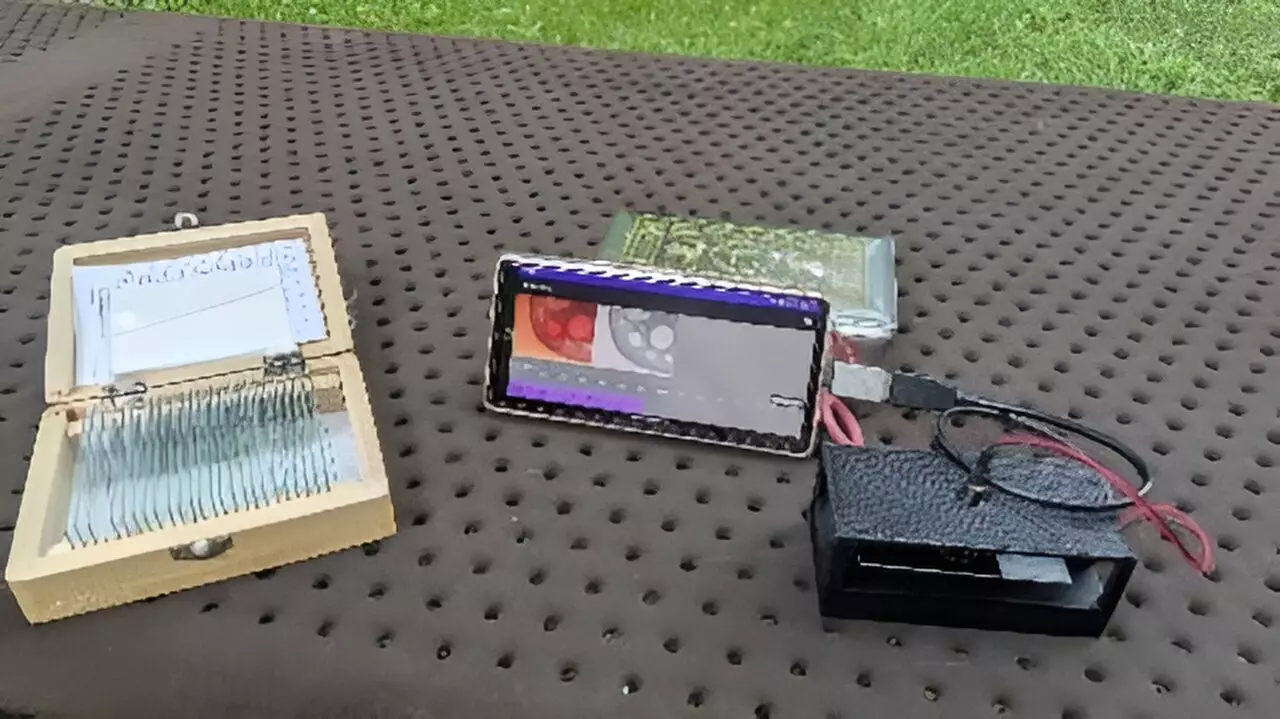In the ever-evolving landscape of scientific instrumentation, a recent breakthrough has emerged that combines technology and accessibility in a strikingly innovative manner—the smartphone-based digital holographic microscope. Researchers from the Tokyo University of Agriculture and Technology have meticulously crafted a device that not only simplifies the complexity typically associated with traditional holographic microscopy but also brings the power of precision 3D measurement to the hands of educators, students, and healthcare professionals in resource-constrained environments. This development represents not merely a technical achievement but a paradigm shift that could democratize scientific exploration and diagnostics.
Redefining Accessibility with Ingenious Design
Unlike existing digital holographic microscopes that necessitate cumbersome optical setups paired with a personal computer, this new device embraces minimalism and portability. The brilliance of its design lies in the integration of a smartphone for computational tasks, paired with an optical system that can be easily fabricated with a 3D printer. This low-cost construction not only eases the economic burden—particularly vital for developing regions—but also enhances usability in outdoor or makeshift laboratory settings. The initiative championed by lead researcher Yuki Nagahama speaks volumes of the potential applications awaiting this technology, such as diagnosing diseases in remote areas and enriching educational opportunities.
The impetus behind this innovation stems from Nagahama’s reflections on the limitations posed by prior microscopy technologies—which required bulky laptops and contained outdated capabilities. As smartphones rapidly transformed into powerful computing devices, the research shifted focus towards leveraging these handheld dynamos to carve out a new niche for holographic microscopy. The result is not just a device, but a gateway that mitigates barriers and entices participation in scientific inquiry.
Harnessing the Power of Holography
At the heart of the microscope’s functionality is its ability to capture and reconstruct holograms—interference patterns produced by overlapping light beams. This technology allows users to obtain detailed 3D profiles of samples, revealing both surface topographies and internal structures. Traditional systems, while potent, fall short in immediate accessibility and transportability. The new smartphone-based model, on the other hand, provides real-time hologram reconstruction via a novel computational method known as band-limited double-step Fresnel diffraction. By streamlining data points, this method empowers faster reconstruction, demonstrating that speed and efficiency need not be sacrificed in pursuit of precision.
The implications of real-time visualization are profound. Users can manipulate holograms through pinch gestures on their smartphone screens, unlocking an interactive experience that fosters deeper engagement with the subject matter. This seamless merging of physical and digital realms is not just appealing; it empowers users to transform observations into tangible learning experiences.
Paving the Way for Future Applications
The implications of this technology reach far beyond the classroom. For medical professionals, particularly in developing nations where resources are scarce, being able to perform diagnostics on-site without expensive lab equipment is invaluable. The microscope holds promise for diagnosing conditions such as sickle cell disease, where immediate results could save lives. In a world increasingly burdened by healthcare disparities, this affordable solution could act as a lifesaving bridge.
Educators, too, stand to benefit immensely. With this portable microscope, students can embark on exploratory learning, observing living organisms in both formal and informal settings. The classroom extends into the home, fostering curiosity and innovation outside the rigid boundaries of traditional learning environments. As educators leverage technology to stimulate interest in STEM fields, initiatives like these play an integral role in shaping future generations.
Looking Ahead: The Future of Microscope Technology
In an age where the convergence of technology and medicine shapes novel solutions, this smartphone-centered innovation is but the beginning. The researchers are already eyeing enhancements utilizing deep learning methodologies to elevate image quality further. As the technology matures, so too does its potential to transform the scientific landscape, particularly in arenas prone to generating artifacts during reconstruction.
With a little creativity and dedication, the humble smartphone can become an instrument of exploration and understanding, capable of connecting individuals to the microscopic world in ways previously reserved for advanced laboratories. As developments in this sphere continue to unfold, one thing is clear: the future of microscopy is not just in the hands of seasoned scientists but in the grasp of anyone curious enough to seek knowledge.

